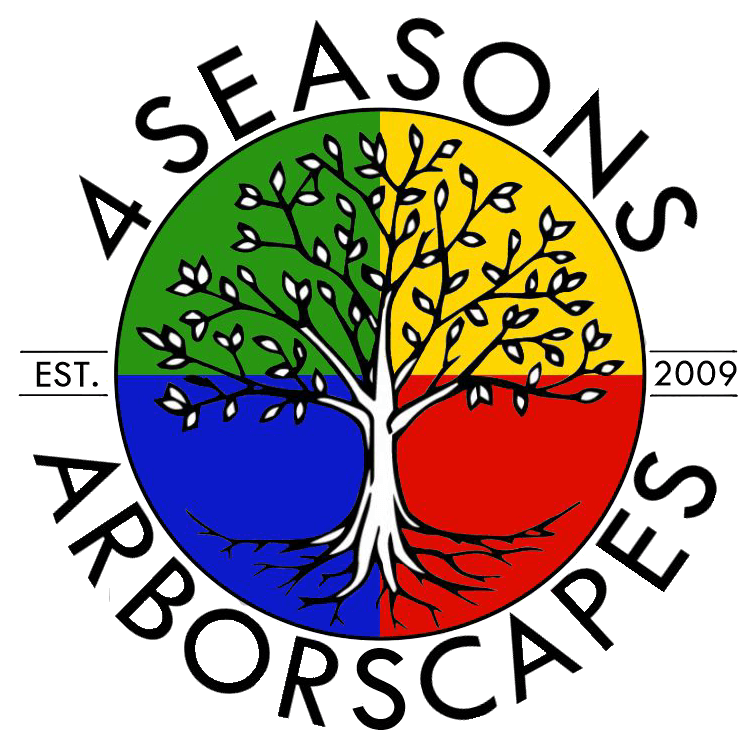Common Structural Deficiencies in Trees
Tree defects occur when the structure of a tree is weakened by sudden trauma. Some tree defects can be structural, and others accidental, such as a car hitting a tree, or it can be a result of horticultural work.
How wood type affects structure
Types of wood are a factor that comes into play. The main types of wood caused by stress in a tree is:
- Reaction wood
- Compression wood
- Tension wood
Reaction wood is abnormal wood formed in response to externally induced mechanical stress in the tree, usually due to a lean or incline. The function of reaction wood is to bring the main stem or branch back to its normal position. There are two types of reaction wood: compression and tension.
Softwood trees, such as pine and cedar, form what is known as compression wood. Compression wood forms on the lower side of leaning stems or branches in a process called compression strain, which pushes the leaning stem or branch back into position.
Hardwoods, such as oak or maple, form what is known as tension wood. Tension wood forms on the upper side of the stem and is meant to pull the stem or branch into position.
Six common types of tree defects
There are 6 universally recognized defects that occur in trees. They tend to be the most commonly seen defects and can be prevented and treated by contacting your local arborist. The six main defects include deadwood, cracks/forks, weak branch unions, decay, trunk cankers, and root problems.
Some other common tree defects include:
- Fungus and decay in the root and stem.
- Lack of lower branches. If a tree is too slender, it will sway more and not be able to hold up its own canopy. Having lower branches maintains uniform stress distribution throughout the length of the trunk.
- Lion-tail pruning is the removal of all the branches and foliage except for the branches and foliage on the end of a main branch connected to the trunk, resulting in a lion tail effect. Canopy weight is not evenly distributed and too much pressure is on the heavier branches. This can cause stress and splitting.
- Over-extended limbs that are unusually long or grow downward or horizontally. Excessive weight on the ends of extended branches causes stress and cracks; breakage resulting from these conditions often occurs at the junction of the branch and stem. The failures usually occur when the branch is under heavy snow, ice or wind.
- Summer branches drop or shedding branches in the summer for no reason.
- Banana cracks. These usually occur when the tree is shaped like a banana – wind causes compression on the curved side causing the tree to crack.
- Windthrow is when the wind tears a tree out of the ground. Trees can survive being ripped out of the ground and will continue to grow in ways that are not structurally sound.
- Root girdle. This can occur in both potted and unpotted plants. The roots are either trapped in a container and cannot spread out, or dirt and mulch build up against the trunk in what’s referred to as a mulch volcano. This will eventually cause root compression, strangulation, and a number of other issues another until the plant fails. Plants affected by girdling roots will not be able to withstand strong winds, waterlogging, and disease.
- Weakly anchored tree. Occurs during transplant in a tree with a substandard root ball, a root system with root damage or decay, or that’s planted in shallow or compact soil.
- Helical crack, caused by twisting of the trunk. These contribute to weak structures in the tree.
- Hazard-beam crack is a crack in the middle of one of the main branches. This tends to bind branches against the direction of the curvature. The crack could lead to splitting horizontally.
Corrective Action
A thorough evaluation needs to be done if any of the defects listed above are present. There are options for correcting the problem, including pruning the tree or removing the tree. Corrective pruning of the tree when it is young is a great way to avoid many problems. When done right, routine pruning should not promote the development of future defects. Installing a cable or brace system will not necessarily repair a hazardous tree, but when done correctly, can extend longevity of the branch or lead. Always, if you have concerns about one or more of your trees, have a certified arborist come out for an evaluation.
References:
Tree Defects and Biomechanics - Horticulture Centre of the Pacific (hcp.ca)
Tree Support Systems | Tree Care Kit (agrilife.org)
How To Recognise Tree Defects. Trees Vermont
Canker Diseases | The Morton Arboretum
HOW to Recognize Hazardous Defects in Trees (unl.edu)
Girdling Roots | University of Maryland Extension (umd.edu)
common structural defects in trees - Canva images
Check out the latest...








